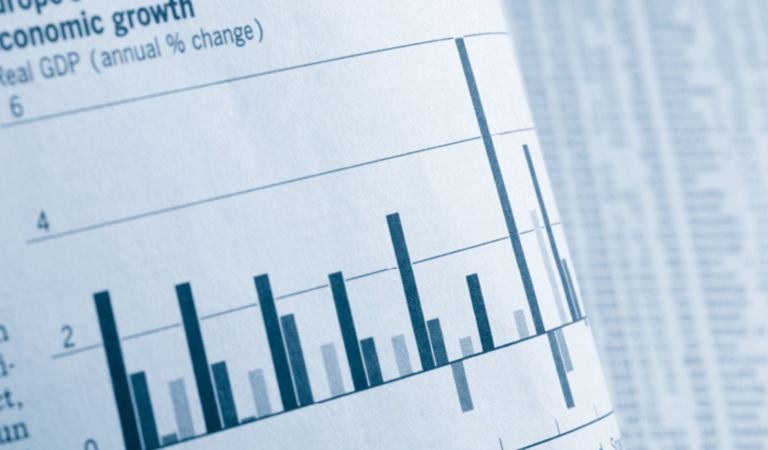Equities
Global equities (+1.3%) advanced for the third straight month. Central banks in developed markets left interest rates unchanged as dissipating inflation set the stage for policy normalization. Market and central bank expectations around the timing, pace, and magnitude of interest-rate cuts varied considerably against a backdrop of economic growth uncertainty and lingering inflation risks. Resilient economic data bolstered hopes of a “soft landing” for the global economy but lessened the potential for lower interest rates in the first quarter. The J.P.Morgan Global Manufacturing PMI breached the critical 50-point threshold, signaling a shift from contraction to expansion for the first time since August 2022. Chinese equities fell sharply as concerns about the country’s economy and a sustained downturn in the property sector overshadowed more resilient parts of the economy. Taiwan’s ruling Democratic Progressive Party candidate Lai Ching-te won the presidential election, a move seen as defiance against Beijing’s efforts to reclaim what it sees as a breakaway province. Intensifying attacks by Houthi rebels and other groups disrupted global shipping through key trading routes in the Middle East and killed three US military personnel in Jordan, sparking fears of military conflict between the US and Iran and a broader regional war. Oil fell below US$77 a barrel as ample crude supplies outweighed geopolitical tensions in the Middle East.
US
US equities (+1.7%) remained on an upward trajectory after sizable gains in the prior two months. The S&P 500 Index hit record highs during the month as sturdy economic data, particularly for consumer spending and the labor market, supported the view that the economy is on track for a “soft landing.” Growth stocks markedly outperformed their value counterparts, propelled by mega-cap technology companies. As expected, the US Federal Reserve (Fed) left interest rates unchanged. Fed Chair Jerome Powell signaled uncertainty about the timing and magnitude of rate cuts in 2024 and pushed back on the market’s expectations for aggressive policy easing, indicating that a March rate cut is unlikely. The Fed’s preferred inflation gauge — the core Personal Consumption Expenditures Price Index — moderated to 2.9% year over year in December. On a three- and six-month annualized basis, core prices rose only 1.5% and 1.9%, respectively, providing greater confidence that the Fed will soon achieve its 2.0% inflation target. Economic growth significantly exceeded forecasts as GDP increased at a 3.3% annualized pace in the fourth quarter amid strong consumer spending. Of the 46% of companies in the S&P 500 Index that had reported fourth-quarter earnings, the blended year-over-year earnings growth for the index was 1.6%. The forward 12-month price-to-earnings ratio for the index was 20.0, above the five- and 10-year averages of 18.9 and 17.6, respectively.
Economic data released during the month was mixed but continued to signify ongoing resilience in the economy. In December, better-than-expected nonfarm payroll growth of 216,000 was at odds with a much weaker household survey, which showed that household employment declined by 683,000. US job openings unexpectedly rose by 101,000, while the number of people quitting their jobs was the lowest in three years. The unemployment rate remained at 3.7%, initial jobless claims trended higher, and slower growth in the Employment Cost Index suggested that wage pressures are easing. Surprisingly robust consumer outlays on goods and services exceeded forecasts in December, underscoring the resilience of spending; headline retail sales rose 0.6% following a 0.3% gain in November, and personal spending increased 0.7% after a 0.4% rise in the previous month. The Conference Board’s Consumer Confidence Index improved to 114.8 in January amid expectations for lower inflation and interest rates in 2024, although consumers signaled less willingness to spend on big-ticket items. Declining interest rates drove mortgage applications to their highest level since July, supporting housing-market activity. December data showed an increase in pending and new-home sales along with building permits, which indicate future construction. However, existing-home sales declined as many homeowners remained reluctant to sell until mortgage rates decline further.
A surprisingly sharp rise in the Institute of Supply Management (ISM) Manufacturing Index to 49.1, from 47.1 in December, was driven by a sturdy rise in new orders and supplier deliveries and a modest increase in production, offering hope that the manufacturing sector is emerging from its recent trough. Employment remained weak. The services sector slowed more than anticipated in December as the ISM Services Index fell to 50.6, from 52.7. New orders waned and employment dropped markedly, reflecting caution about the weaker demand outlook. The National Federation of Independent Businesses (NFIB) Small Business Optimism Index ticked up to a five-month high in December amid improving sentiment around sales, earnings trends, and expectations. However, companies still remained very pessimistic about economic prospects in 2024.
Within the S&P 500 Index (+1.7%), five of the 11 sectors posted positive results for the period. Communication services (+5.0%) was the best-performing sector, led by interactive media and services (+3.8%). Information technology (+4.0%) outperformed, aided by semiconductors & semiconductor equipment (+9.4%). Financials (+3.0%) rose, as insurance (+6.2%) and financial services (+5.9%) contributed to the sector. Health care (+3.0%) also outperformed, aided by pharmaceuticals (+4.8%) and biotechnology (+5.2%). Consumer discretionary (-3.5%) was the worst-performing sector, weighted down by automobiles (-21.3%). Real estate (-4.7%) and materials (-3.9%) also underperformed.
Europe
European equities (+1.3%) rose in January. In the fourth quarter of 2023, the eurozone economy stagnated according to Eurostat estimates, held back by shrinking German output and stalled French economic growth that offset a stronger-than-expected rebound in the economies of Spain and Italy. The HCOB Flash Eurozone Composite PMI declined in January at the slowest rate in six months, although the manufacturing and services sectors continued to weaken amid further drops in new business, while employment increased fractionally. Against a backdrop of ebbing inflation and lackluster economic growth, the European Central Bank (ECB) and the central banks of Norway and Sweden left interest rates unchanged. A renewed decline in eurozone inflation to 2.8% in January, after it edged up to 2.9% in December, supported views that the ECB could begin to cut interest rates in the second quarter. Ongoing attacks by Iran-backed Houthi militants on commercial ships in the Red Sea caused major shipping firms to divert their vessels away from the Suez Canal, the quickest trade route between Europe and Asia. Economists warned that shipping disruptions pose risks to Europe’s economic outlook and inflation, which could affect central banks’ rate-cut plans. Fourth-quarter earnings for companies in the STOXX 600 Index are forecast to decline by 8.5% from a year earlier.
Europe’s manufacturing sector downturn eased in January; the HCOB Eurozone Manufacturing PMI increased to 46.6, up markedly from 44.4 in December and the highest level in 10 months. Output and new orders contracted at the slowest rate since last April, and factories shed jobs for the eighth successive month. Encouragingly, business confidence edged up to a nine-month high, and input costs and output prices continued to fall. The HCOB Flash Eurozone Composite PMI revealed that services sector activity contracted for the sixth consecutive month. New business declined at the slowest pace since July, suggesting a lessening demand downturn, while cost growth was the highest in eight months. The European Commission’s Economic Sentiment Indicator stabilized at 96.2 in January; both consumer confidence and industry confidence were broadly stable.
The German (+0.7%) economy shrank by 0.3% in 2023 amid high inflation, rising interest rates, and elevated energy costs, making it the worst-performing major economy globally. Nevertheless, the ZEW Indicator of Economic Sentiment in January advanced to a 10-month high, signaling an optimistic shift in economic expectations amid growing expectations of interest-rate cuts by the ECB. In the UK (-1.2%), the S&P Global/CIPS Flash Composite PMI expanded to 52.5 in January, above the neutral 50.0 threshold for the third straight month, led by a continued rebound in the services sector. Headline inflation increased unexpectedly in December to 4.0%, from 3.9% in November, undercutting the market’s expectations for an imminent rate cut by the Bank of England. Italy’s (+2.1%) economy expanded by 0.2% over the fourth quarter, supported by stronger output in industry and services, while Spain’s (+0.3%) economy accelerated faster than expected with quarterly growth of 0.6%, thanks to rising domestic demand.
Pacific Basin
Pacific Basin equities (+5.2%) ended higher. In Australia (+1.6%), economic data revealed that the economy and inflation markedly weakened in December, which likely signals the end of the Reserve Bank of Australia’s (RBA) tightening cycle. Annual headline inflation slowed more than anticipated to 4.1% in the fourth quarter — the lowest in two years — sending the currency and bond yields lower. Retail sales in December slid by the most in 12 months and were well below expectations; on an annual basis, sales dropped to a level last seen during the pandemic, suggesting that tighter monetary policy and elevated living costs are restraining demand. The economy shed 65,100 jobs in December, significantly below forecast and the most since September 2021. The unemployment rate was unchanged at 3.9%. The combination of slowing inflation, lackluster consumer spending, and a weakening job market suggests that the RBA will likely hold interest rates steady in February.
In Japan (+8.5%), the Bank of Japan (BOJ) maintained its current monetary settings, as expected. However, markets gained greater certainty that interest rates will soon rise after BOJ Governor Kazuo Ueda indicated growing conviction that the conditions for phasing out the bank’s ultra-loose monetary settings are starting to materialize. Although Ueda gave a time frame for policy tightening, he signaled greater confidence that inflation will sustainably meet the bank’s 2% target, pointing to steady rises in service-sector prices. Financial markets and the BOJ will scrutinize spring wage negotiations to determine if a positive cycle of rising wages is in place — a key condition for raising interest rates. Japan’s inflation slowed for the second straight month as core CPI rose 2.3% year over year in December, in line with expectations. Other data suggested that the country’s economic recovery remains fragile; retail sales fell 2.9% in the month of December, below consensus expectations, while industrial production was weaker than anticipated, rising 1.8% in the month. A severe 7.6 magnitude earthquake in the Ishikawa Prefecture prompted the government to approve a revised fiscal 2024 budget, doubling the disaster reserve to 1 trillion yen.
In Hong Kong (-9.6%), stocks fell to their lowest level in over a year. A rise in tourism and private consumption helped GDP to rebound by 3.2% in 2023 and by 4.3% year over year in the fourth quarter. However, the weaker-than-expected results and disappointing fourth-quarter GDP in China sparked fears of slowing economic growth in 2024, dragging equities lower. China Evergrande, the second-largest Chinese property developer, was ordered to be liquidated by a Hong Kong court after last-minute creditor negotiations failed to reach a deal. The unwinding is expected to take years and includes a restructuring of more than US$300 billion of liabilities. In December, Hong Kong’s exports increased for the third consecutive month, rising 11% year over year. For 2023, exports fell by 7.8% compared to 2022, with the government warning that elevated geopolitical tensions and a global economic slowdown would weigh on the city’s economy and trade.
Emerging Markets
Emerging markets (EM) equities (-3.5%) fell in January. Asia led the decline followed by Latin America and Europe, the Middle East, and Africa (EMEA).
In Asia (-4.1%), China’s (-10.4%) stock market rout continued. Fourth-quarter GDP grew 5.2% from a year earlier, but investor sentiment remained depressed amid a host of concerns, including an ongoing property crisis, weak consumer demand, mounting local government debt, and deflation. New support measures were unveiled, including a forthcoming deep cut to the reserve requirement ratio (RRR) and a new policy to help some property developers obtain loans, but markets still remained concerned about the state of the economy. New policy measures may be on the horizon, with authorities mulling over a ¥2 trillion rescue package to stabilize the slumping stock market. In Taiwan (+0.8%), voters elected the ruling Democratic Progressive Party candidate Lai Ching-te as president, signaling defiance against China’s efforts to reclaim the province. In India (+2.2%), the market capitalization of India’s Stock Exchange surpassed the value of Hong Kong’s exchange to become the seventh largest in the world, as the country’s stable political climate and significant infrastructure spending has made the country an attractive destination for foreign investment.
Latin American (-3.1%) equities fell. Brazil’s (-4.3%) annual inflation rate declined for a third consecutive month. In response, the central bank reduced the Selic benchmark rate by 50 basis points (bps), to 11.25%, with policymakers forecasting the same pace of monetary easing in upcoming meetings. In Mexico (-0.5%), fourth-quarter GDP growth slowed to 0.1% compared to the prior quarter, below consensus estimates. The country is running an elevated deficit as it approaches the elections scheduled for June this year, while also attracting an influx of foreign capital due to corporations expanding their operations in the country. In Chile (-5.0%), the central bank accelerated its pace of monetary easing by reducing interest rates by 1%, to 7.25%, as annual inflation approached the bank’s 3% target.
In EMEA (-0.2%), Saudi Arabia (-1.2%) declined amid escalating tensions in the Persian Gulf following a drone attack by militants that killed US troops. The country ordered state oil company Aramco to halt its oil expansion plan and issued US$12 billion of US-dollar bonds to begin funding an economic overhaul to reduce its oil dependency. South Africa’s (-4.1%) inflation fell for the second straight month, to 5.1% year over year in December, and the rand was steady after interest rates were left unchanged at 8.25%. Kuwait (+7.0%) formed a new government under its new Emir and Prime Minister Sheikh Mohammed Sabah al-Salem al-Sabah following the death of its previous ruler. The country’s budget deficit is expected to decrease by 13.5% in the 2024 – 2025 fiscal year according to the country’s Ministry of Finance. Turkey (+13.3%) surged as Moody’s revised the country’s outlook to positive from stable, citing that tighter monetary policy could reduce very high inflation. The central bank lifted interest rates to 45% and signaled that the tightening cycle is likely complete.
Fixed Income
Fixed income sectors broadly outperformed government bonds on an excess returns basis, as better-than-expected macroeconomic data and reduced inflation anxiety contributed to spread tightening. Sovereign yields moved higher as rate-cut expectations stalled.
US economic data showed resilience, highlighted by relatively strong consumer indicators, including higher personal income, better-than-expected retail sales and spending, and improved confidence due to expectations for lower interest rates and easing inflation worries. NFIB small business optimism improved modestly, but labor costs remained a top concern. The Consumer Price Index (CPI) at the headline and core levels outpaced expectations, owing to higher shelter prices. Job creation was better than anticipated, and the unemployment rate held steady. Industrial production expanded on rising factory output, while the mining and utilities sectors were flat. Construction spending rose, led by the single-family housing segment. In Europe, the HCOB Eurozone Manufacturing PMI rose but remained in contractionary territory, and the unemployment rate dipped to the lowest level since June 2023. Germany’s annual CPI was below consensus estimates amid falling energy prices. The UK’s manufacturing PMI remained in contraction, while the services PMI advanced to an eight-month high. China’s industrial production accelerated, driven by gains in mining and manufacturing, while annual inflation edged lower, due in part to a sizable decline in pork prices. Japan’s industrial production fell amid a sharp drop in machinery orders. Canada’s retail sales declined on slowdown of food and general merchandise purchases, while Australia’s building approvals hit a 12-year low amid rising costs and planning delays.
Most major central banks kept interest rates unchanged and removed their tightening biases, with varied expectations around the timing of monetary easing. The Fed signaled that lower policy rates in March are unlikely despite slowing inflation, while the ECB gave no indication of rate cuts but acknowledged significant progress on curbing inflation. Norway’s Norges Bank reiterated the need for tight monetary policy, and the BOJ maintained negative interest rates but signaled growing conviction that it can taper monetary stimulus.
Most global sovereign bond yields rose, reversing some of the bond market rally from last month. US Treasury yields rose to start the year but most of the move was recouped by the end of the month. A similar pattern was observed in Europe: eurozone yields edged down later in the month after German retail sales surprised to the downside and French inflation eased more than expected. Japanese government bond yields ticked up on hawkish BOJ commentary and weak demand in a series of auctions. In EM, Brazil’s central bank cut rates by 50 bps and vowed to maintain this pace of easing amid slowing inflation and signs of a weaker economy. The People’s Bank of China announced a 50 bps RRR reduction for February, slated as long-term capital to banks. Chinese policymakers also indicated that there is additional room for further monetary policy easing. The Bloomberg TIPS index delivered a total return of 0.18%, and the 10-year breakeven inflation rate increased by 7 bps to 2.25% during the month.
Global credit outperformed duration-equivalent government bonds as spreads tightened. Within the securitized sectors, agency mortgage-backed, commercial mortgage-backed, and asset-backed securities outperformed duration-equivalent government bonds. Within EMs, local markets debt (-1.52%) underperformed external debt (-1.02%), in US-dollar terms. Spread widening detracted from external debt performance, and an increase in US Treasury yields also hurt results. Depreciation in EM currencies drove the negative performance within local markets, while movement in EM rates had a positive impact on results.
Currencies
The US dollar appreciated versus most major currencies as the Fed continued to push back against bets of imminent rate cuts amid stronger economic data. Among the G10, the Japanese yen was the worst performer despite rising expectations for a near-term BOJ policy shift, while the Australian dollar declined amid slower-than-anticipated inflation and lackluster PMI data in China, Australia’s largest trading partner. In EMs, most currencies depreciated versus the US dollar. Latin American currencies broadly declined after three central banks (Brazil, Chile, and Colombia) announced plans to continue cutting interest rates. In EMEA, the Turkish lira remained on a downward trend, even as the central bank rate continued to tighten monetary policy to combat high inflation. In Asia, the South Korean won, Malaysian ringgit, and Indonesian rupiah led the declines.
Commodities
Commodities (+4.5%) rose in January. Energy and agriculture & livestock generated positive returns, while industrial metals and precious metals registered negative results. Energy (+7.1%) rallied as oil prices delivered their first monthly gain since September amid heightened tensions in the Middle East. Surprisingly strong US economic growth, disruptions to US crude supplies due to winter storms, and China’s efforts to stimulate its economy drove up the prices for gas oil (+15.0%), heating oil (+12.8%), crude oil (+5.8%), and gasoline (+5.2%). US natural gas (+1.0%) rose on slightly cooler near-term weather forecasts and higher heating demand than previously anticipated. However, the increase was limited by forecasts for warmer-than-normal temperatures overall and robust production.
Industrial metals (-1.5%) ended lower. Lead (+6.1%) advanced as an increasing number of Chinese refined lead smelters planned to conduct equipment maintenance during the month, causing a sharp decline in refined lead production. Copper (+0.6%) finished marginally higher, but nickel (-2.2%), aluminum (-4.4%), and zinc (-4.8%) fell alongside a stronger US dollar and broadly weaker risk sentiment, as confidence in China continued to flounder despite the government’s stimulus efforts.
Precious metals (-0.9%) fell modestly. Gold (-0.7%) and silver (-3.3%) slid after the Fed dampened hopes of a rate cut in March. Additionally, US economic resilience, solid gains in the US dollar, and a rise in US Treasury yields weighed on gold and silver prices.
Agriculture & livestock (+2.3%) finished higher. Sugar (+17.8%) soared on lower sugar output in India, which was impacted by below-average rainfalls and the country’s extended restrictions on sugar exports. Cocoa (+15.5%) surged due to concerns that seasonal Harmattan winds in West Africa would become more extreme than normal, drying out cocoa fields and threatening to further reduce global cocoa production. Implementation of California’s animal welfare law that mandates larger space requirements for pigs, cows, and chickens supported lean hogs (+14.7%), feeder cattle (+8.2%), and live cattle (+6.0%). Cotton (+5.7%) rose as the US Department of Agriculture reported a decline in global cotton production in major growing countries, including China, the US, and Australia. Coffee (+3.6%) was supported by dry weather in Brazil and low inventory. Wheat (-4.1%), corn (-4.4%), and soybeans (-5.4%) extended their losses as benign supply forecasts and sluggish demand added to the bearish sentiment. The outlook for widening soybean and corn inventories due to expectations for a sizable South American harvest this season weighed on prices for these food staples.































Monthly Market Review — November 2025
Continue readingBy